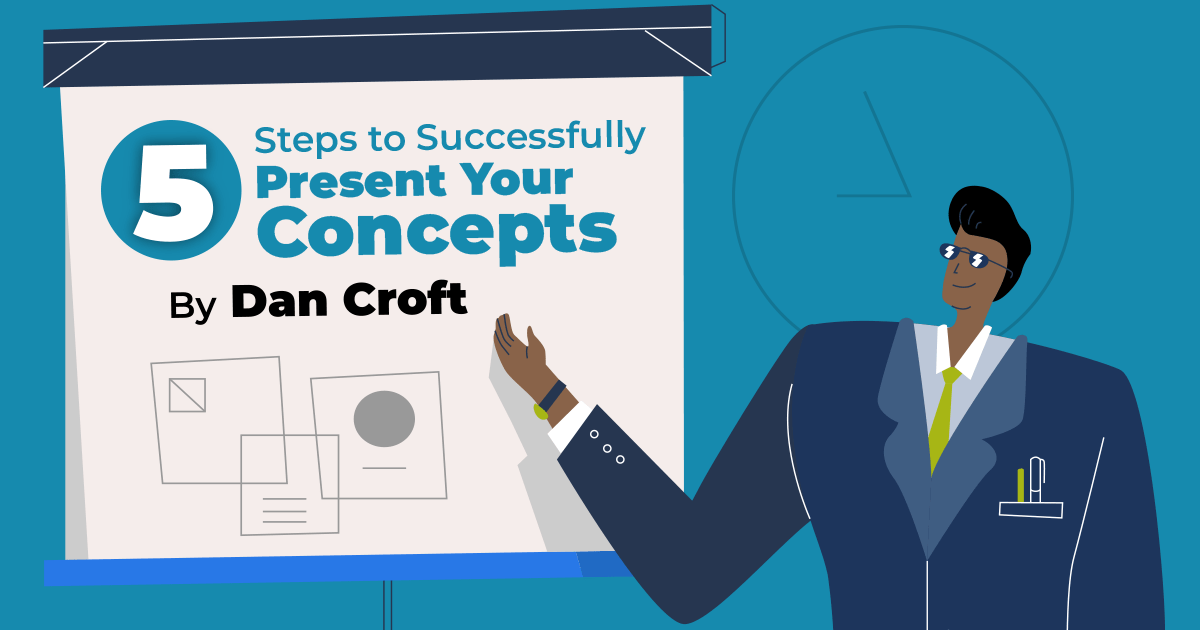There is an art to presenting art—or, in LMD’s case, presenting branding and marketing design ideas to our clients. Whether we’re sharing logos, ads, videos, websites, brochures, or annual reports, LMD uses a tried and tested process to present our concepts. We follow these steps so that our presentations are efficient and productive:
-
Plan Ahead
Know the lay of the land. Will the presentation be in-person or virtual (or a hybrid)? How many participants will attend? Will decisions be made in the meeting or will it be strictly informative? What, if any, exercises will we use to make decisions? Do we need to make sure the presentation is in the cloud, accessed locally (i.e., from our hard drive), or in print (or all three)? Use these questions to create a checklist ahead of time and ensure that your presentation has a smooth start. -
Set the Stage
At the beginning of the presentation, after we go through introductions, we review the agenda and talk about how the meeting will unfold, including time constraints, so that we know when we should moderate a discussion and when we should move on to the next topic. We always remind our clients that we prefer open, honest conversations and invite them to ask questions often. We usually defer decisions until after the participants review the deliverables and, more importantly, after we’ve left the room. We never want to put them on the spot or force important decisions to be made without time to absorb the concepts we presented. Being clear about this expectation leads to more relaxed and engaging meetings. -
Tell the Story
Design is both subjective and personal, but every creation has a purpose, a history, and a story. Sharing this information helps clients understand the concept better and make decisions that take more than just aesthetics into consideration. Behind every mark, font choice, layout, and video sequence, there is meaning and thought. And if that carefully crafted story resonates, the decision-making process becomes much easier. -
Focus on Reactions, Especially Non-Verbal
When possible, we prefer in-person presentations to virtual ones. In my experience, presenting to a group with few distractions leads to more productive and honest conversations. For example, when I present logos, I always keep an eye out for clues to immediate gut reactions. Smiles, nods, excitement, disdain, puzzlement, and confusion are facial and body expressions that happen naturally and tell us a lot about first impressions. A client may not be able to verbally express their thoughts about concepts right away, but we can glean a lot from their non-verbal reactions, which helps us guide the conversation immediately following the reveal. -
Let It Breathe, Then Move Forward
We find it vital to give each design enough time in the spotlight, to allow each concept to breathe and get proper consideration. We usually avoid showing multiple options simultaneously because we believe each concept, from the first to the last one we show, should have equal billing. Also, we often encourage clients to avoid commenting altogether and let the designs simmer while they deliberate. Hasty decisions often lead to regret, so we prefer that clients respond when they’re ready and have carefully considered all options. Once the presentation of concepts is complete, we move on to the next steps and expectations for the next conversation.
Are you looking for a new brand, video, website, or ad campaign? With our proven and strategic creative process, the LMD team will guide you toward successful results every time.

